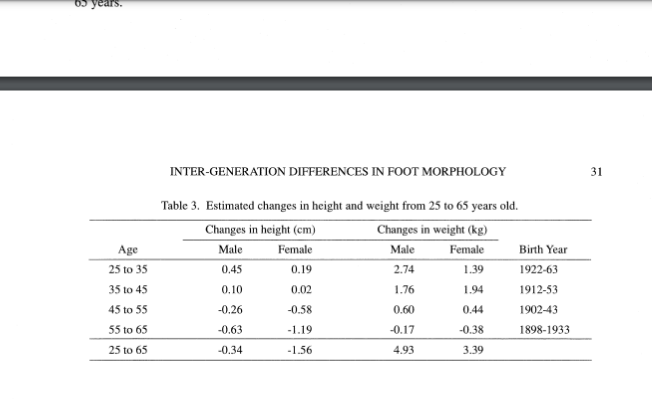This age range where height is increased is definitely post fusion I don’t know whether this is torso height or leg height but it’s a pretty big breakthrough. This is a study studying changes in the feet but there is a height increase shown in the paper and the authors do acknowledge it. The reason that the study found height increase in a japanese population but studies have not find height increase in other populations is that japanese tend to be thinner and having access fat plus being sedentary could lead to bad posture.
INTER-GENERATION DIFFERENCES IN FOOT MORPHOLOGY: AGING OR SECULAR CHANGE?
“The subjects were 135 males and 133 ware 135 males and 133 females born before 1940 (the 1930 group below), and 383 males and 414 females born between 1960 and 1979 (the 1970 group below).”<-so it’s not a longitudinal study unfortunately.
The study may have indications that the feet bones change over time but it’s unclear by the methodology but here’s the interesting part where height gain is shown:

The authors acknowledge the increase in height “A small increase in height was observed between the ages of 25 and 45 years“
The paper also makes an interesting observation regarding relaxin and feet: “Female feet are thought to become wider after their first pregnancy because the ligaments of the feet loosen due to hormonal effects. If this is true, inter-generation differences in foot dimensions would be larger in females than in males, and the differences between a 18-year-old and a 30-yearold would be much larger than the differences between a 30-year-old and a 50-year-old. Inter-generation differences in females were in fact larger than those in males in the present study (Table 2), but this was due to the exceptionally robust feet of the female 1930 groups in the IPRI and NIBH series. The trend in FB with age or with BY does not support this hypothesis”
